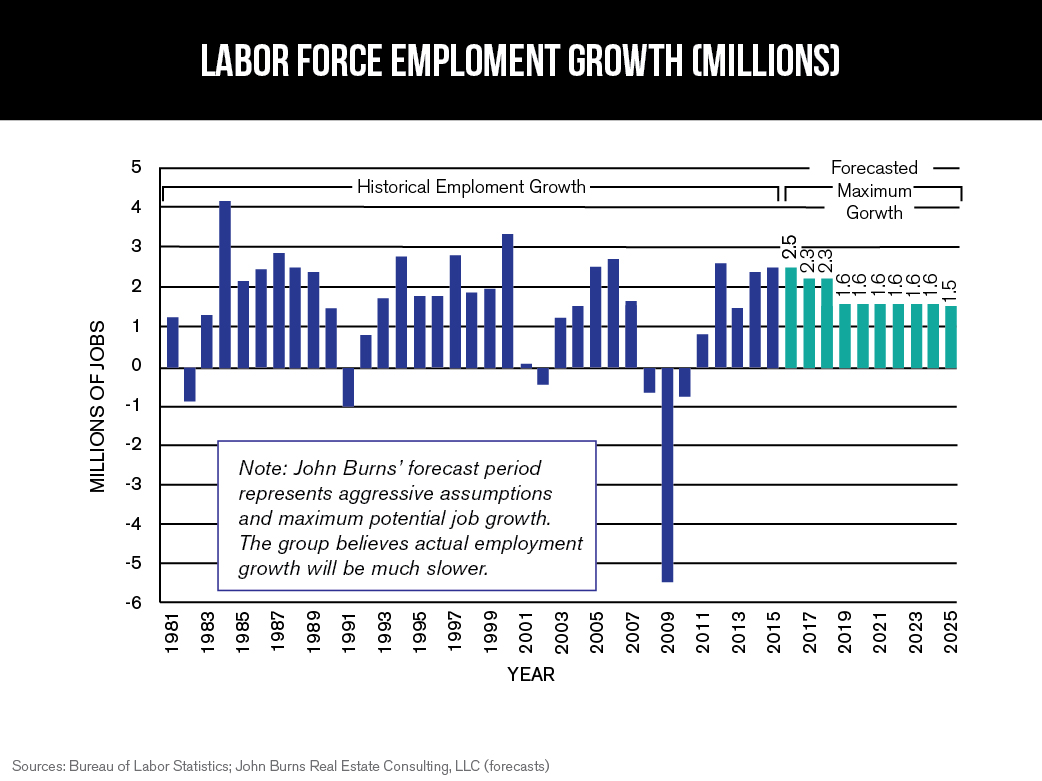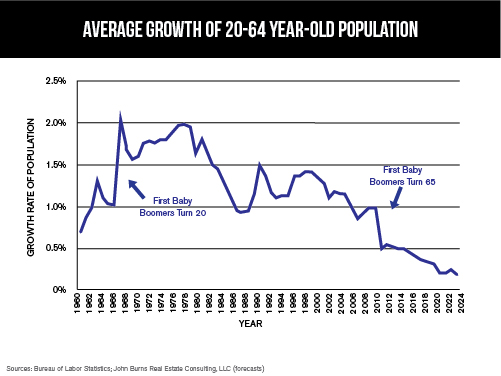
Today, builders are facing a serious labor shortage. A few years from now, that shortage could get even worse.
In a new report from John Burns Real Estate Consulting, the research group’s vice president and chief demographer, Chris Porter, analyzed data pulled from the Bureau of Labor Statistics and, after making some projections based on “aggressive assumptions,” discovered evidence suggesting the country’s labor market could, over the next several years, find itself with not enough working age people to satisfy demand.
The why of it all
1. The retirement surge will drain labor pools – The Baby Boomers are a massive generation, and their inevitable exit of the workforce threatens to put extreme pressure on future labor pools. The big problem is that those pools will drain faster than they can be refilled. In 2000, approximately 2 million people turned 65 (i.e. reached the age of retirement). That number will jump to 3.5 million this year, and by 2021 it will be closer to 4 million. According to John Burns’ report, employment growth over the next three year has a ceiling of about 1.7 percent, which equates to 2.3 to 2.5 million jobs per year. And beyond those first three years and through 2025, the growth rate is expected to drop closer to 1 percent, or 1.5 to 1.6 million jobs annually.

2. Working-age population growth won’t be able to keep up – Baby Boomers are called Baby Boomers because their generation came as sort of an explosion after World War II. Since the mid-1960s, when the first of the Boomers were turning 20, the number of 20-year-olds entering the labor force exceeded the number leaving it, the report confirmed. The prospects over the next few years, however, show a falling population growth rate, and leave the worry that there may not be enough warm bodies to fill the employment gaps left by retiring Boomers.

Small silver linings
While it’s true the shortage projected in the report brings with it disastrous complications for the many industries it will affect, there are also two small, silver linings we can glean from it.
1. Unemployment will plummet – In 2010, unemployment in the U.S. nearly reached 10 percent. It was a 30-year high. Today the rate is closer to 4 percent. But if the country’s population shifts as the report predicts, we could see that figure dropping 4 percent flat by 2018, and 3.7 percent by 2025. However, the group again reminded their projection is based off of aggressive assumptions. It is unlikely such a low rate will be sustained for that period of time.
2. Labor participation will be “huge” – A depleted workforce means a glut of jobs, and when you have options, people are more likely to work. That is why John Burns predicts 2025’s labor participation rate will be three percent higher than today’s.

3. Older workers will be more common – It’s been established that working-age population growth may be insufficient to supplement the Boomers’ eventual exodus from the workforce. Part of the solution in satisfying the remaining employment demand will be that people 65 and older will work for longer. Working on similar assumptions that allowed for the above projections, the report puts the participation rate of the 65-to-69-year-old crowd at about 37 percent (5 percent higher than today’s already all-time high); and the rate of 70-to-74-year-olds at about 22 percent (3 percent higher than today’s).
